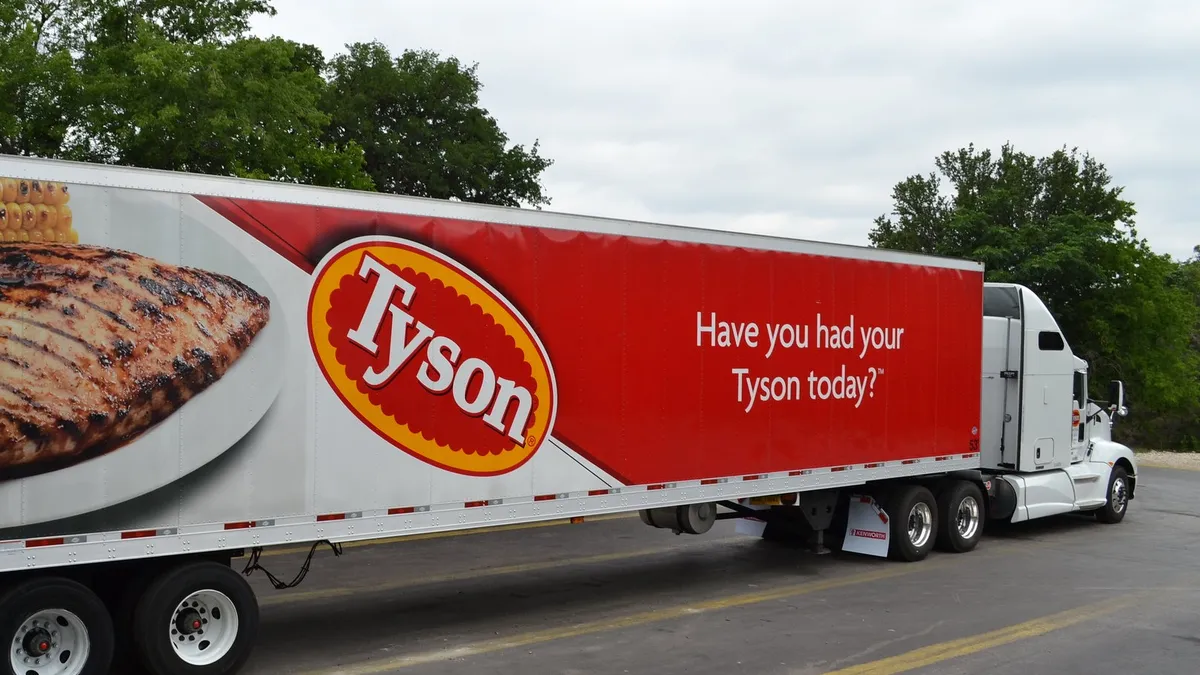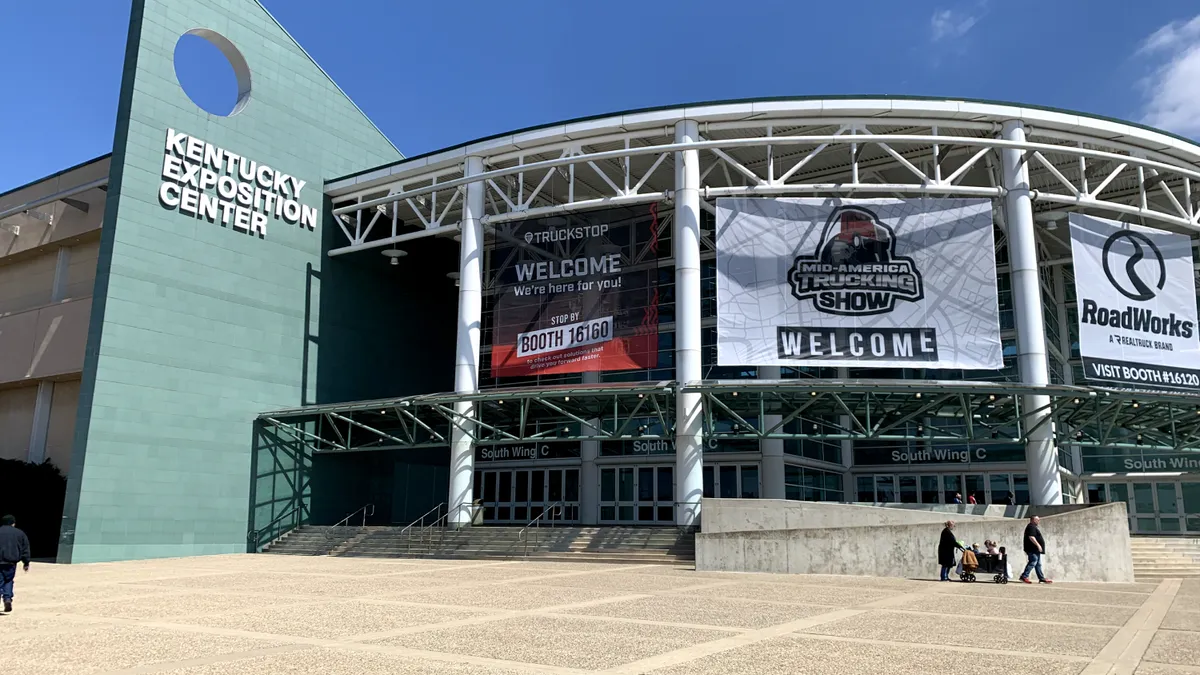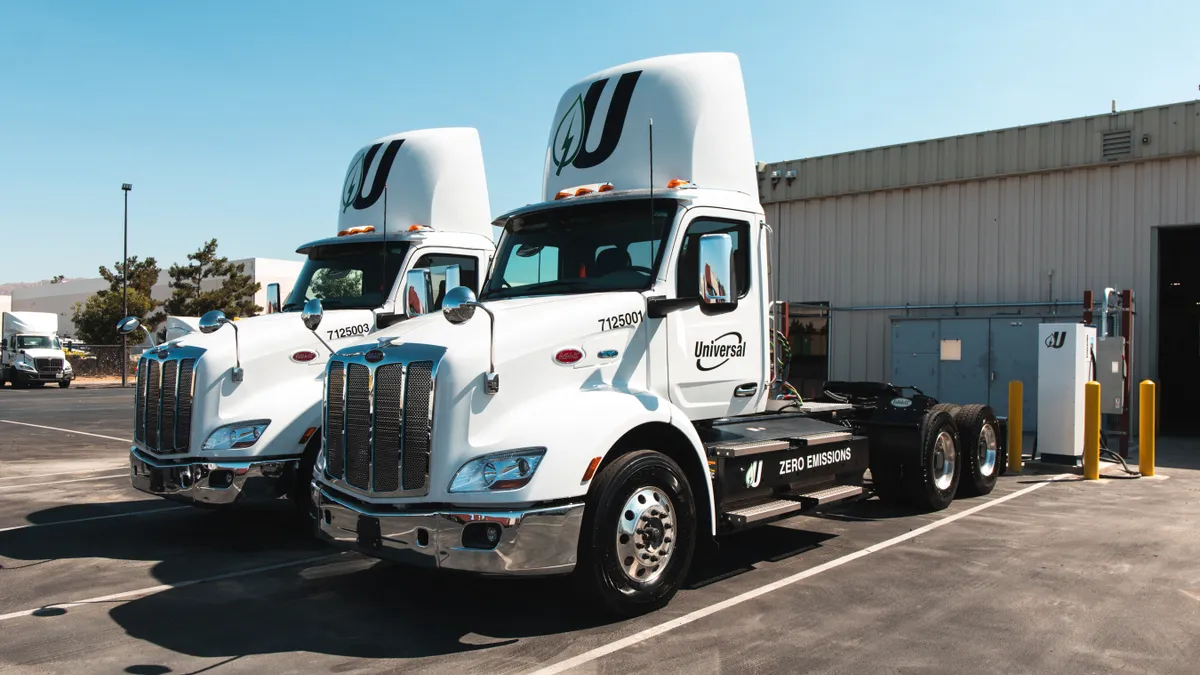Truck drivers face numerous safety hazards on a daily basis, from bad weather to poor road surfaces, equipment failure and the sometimes-unpredictable drivers with whom they share the road. Fleet managers, as a consequence, spend hours and dollars on potential solutions to make the job of commercial driving safer.
In that spirit, Tyson Foods recently took the step of swapping out some of its fleet’s traditional mirrors for cameras and monitors.
Tyson chose the MirrorEye Camera Monitor System, developed by automotive electronics maker Stoneridge. The system stands as the first of its kind to receive a five-year FMCSA exemption, which allowed trucks equipped with the technology to operate with integrated cameras and displays in lieu of the required two rear-facing mirrors.
The FMCSA determined, when used instead of mirrors, the cameras would likely "achieve a level of safety equivalent to, or greater than, the level of safety provided by the regulation."
A clear view for drivers
An installed camera monitor system provides three views, according to Stoneridge:
- Wide angle.
- Narrow angle.
- Passenger side "look-down" cameras.
The result, said Brad Corrodi, vice president of fleet products and services at the company, is a much improved field view and elimination of common blind spots.
"A mirror is constrained by physics," he said, adding that physical objects can partially block drivers' front and side views. "If we can improve on that, it’s an important step."
The increased visibility potential of the camera monitor system drew Tyson to the technology, said Justin Kissinger, the company's senior manager of asset procurement for transportation. "When we were introduced to this technology, we were impressed with the increased visibility it provided the driver," he said.
Kissinger said more than 80% of Tyson's incidents and accidents are low-speed, close-proximity occurrences. "We believe these can be mitigated with increased visibility," he said.
"A mirror is constrained by physics."

Brad Corrodi
Vice President of Fleet Products and Services at Stoneridge
Schneider and J.B. Hunt were among the early testers of MirrorEye. The fleets submitted comments in 2018 in favor of FMCSA approval of Stoneridge's exemption request. At the time, they used the camera monitor system in addition to cameras, due to regulatory requirements.
Schneider reported an "overwhelmingly positive experience" for drivers, including better visibility at night and reduced glare.
J.B. Hunt said it "received overwhelming positive feedback" from drivers during a pilot of the technology. The drivers reported "excellent monitor image clarity" and better field of vision, eliminating the passenger-side blind spot.
Reflecting on cameras' benefits
Corrodi pointed to areas including grade-level crossings and crosswalks as spots where having a diagonal view is important — something not provided by mirrors, but it's a box that a camera can check.
A camera monitor system also tracks the end of a trailer to keep it in view while the vehicle is moving forward, potentially eliminating right-hand turn collisions with motorists and pedestrians. The quality of the images cameras provide includes color night vision, low-light sensitivity and glare reduction, giving them advantages over their mirror predecessors.
Mirrors are often constrained by weather, too, said Corrodi. "You’ve got a piece of glass sticking out from the vehicle in ice, rain and snow," he said. "It gets hard to make out the image in the mirror when you experience those conditions."
Cameras, by contrast, extend from the cab roof, out of road spray. "They also have heat embedded in the glass that can defrost in extreme weather circumstances," Corrodi said. "A good deal of engineering went into the system so that it doesn't suffer from some of the common problems of mirrors."

One downside of the cameras may be up-front costs. Corrodi said the cost varies with volume, but list price on a camera monitor system is $4,500 per vehicle.
Physical damage to the cameras or software problem could also result in loss of visibility for the truck driver until a technician can repair the system or equipment.
The FMCSA noted that Stoneridge's exemption laid out a fail-safe design, meaning the system has independent video processing. So, if one camera fails, other cameras are still displayed. "This ensures that real-time images are continuously displayed without interruption," FMCSA's notice on the Federal Register stated.
And Schneider said at the time of the comment, in its six months of testing, the fleet had "yet to experience any type of dramatic system failure which affected the safe operation of our CMV(s)."
The promise of safety and return on investment
Tyson started by outfitting five tractors with cameras to test their effectiveness and gather feedback from drivers. The initial results were promising, so Tyson expanded the pilot to 55 vehicles to prove out the financial benefit of the technology, hopefully leading to a return on investment, said Kissinger.
"ROI comes from three areas," he explained. "Fuel efficiency is the most tangible, directly measurable benefit, as the aerodynamic profile is so much smaller than a west coast mirror."
European fleet trials with camera monitor systems, in fact, have demonstrated fuel cost savings of 2% to 3% per year.
"The aerodynamic profile is so much smaller than a west-coast mirror."

Justin Kissinger
Senior Manager of Asset Procurement for Transportation at Tyson Foods
Another factor leading to ROI is avoiding investment in video telematics side-cameras, as the MirrorEye video stream can be fed into many existing video telematics systems, said Corrodi.
The largest benefit by far, according to Corrodi, is helping drivers avoid incidents in the first place.
"The camera gives them more complete views and better visibility in all conditions, day or night," he said. "But it can be hard to measure the benefit from accidents that never happen.”
While Tyson is early in its expanded pilot, Kissinger said feedback from drivers so far is promising.
"We’ve obtained mostly positive feedback from our driving force thus far, particularly around the increased vision during inclement weather situations,” he said. "Our drivers have begun to adopt this technology as another tool to assist them in their everyday professional activities."
This story was updated to clarify a quote.




















